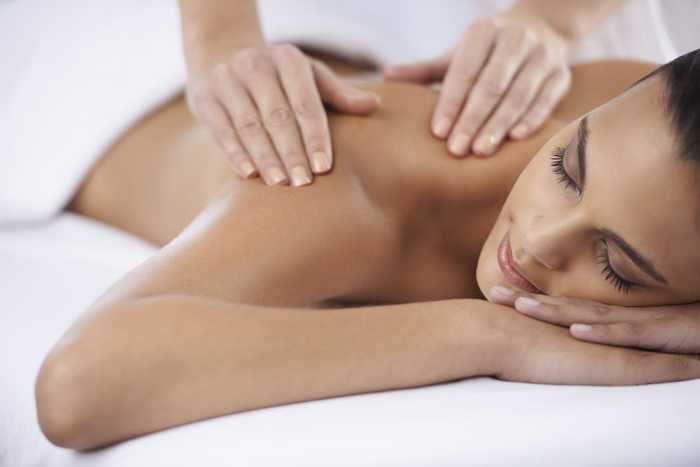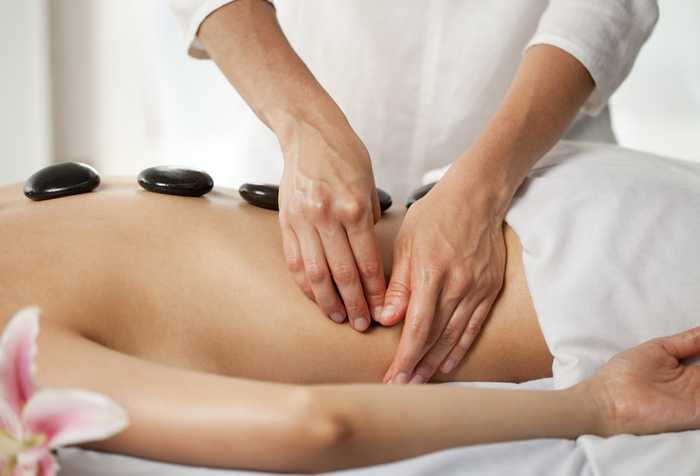Creating the perfect massage routine at home
Not everyone can regularly fit a professional massage into their routine, but massage has invaluable benefits that should be included in a healthy lifestyle. These include improving circulation, relaxing muscles, aiding digestion and ridding the body of toxins, not to mention the mental calming it brings.
This week, Olivia will be telling you how to create your own peaceful massage session at home for your partner to practise on you. Whilst this is by no means a substitute for a professional massage, this home massage will help you get to know your body and well-being better.
1. Choose your massage balm
The Oleo range of massage balms each have a specially chosen blend of essential and natural oils to cater to different needs. Personally, I like the Orange and Ylang Ylang balm for its uplifting scent and calming effect, but I’ll leave it to you to decide which blend best suits you!
ORANGE & YLANG YLANG: An uplifting but not overly sedating blend that employs ylang ylang for its destressing powers (great for treating stress/anxiety).
LAVENDER & CLARY SAGE: Balancing lavender is perfect for treating stress induced physical symptoms e.g. migraines, whilst clary sage has a warming effect that makes it good for lifting your mood and relieving physical tension too. (stress/depression/muscle pain)
LAVENDER: Balancing lavender is brilliant for (insomnia/treating skin conditions/nerves)
GRAPEFRUIT, CYPRESS & JUNIPER: Cooling and refreshing grapefruit can help relieve constipation and treat cellulite. Cypress and Juniper also can release toxins and reduce cellulite. (Constipation/ illness/ cellulite).
GINGER, SPIKE LAVENDER & MARJORAM: This warming blend will help relieve muscle tenision and stiffness (muscle pains/strains/sprains rheumatism).
FRANKINCENSE & PALMAROSA: Rejuvenating for tired bodies and minds (anti ageing).
EUCALYPTUS: A refreshing oil that can help with poor concentration, but is also an effective decongestant. (respiratory problems/rheumatism/ arthritis/ poor concentration).
BLACK PEPPER & ROSEMARY: Black pepper aids digestion and stimulates circulation whilst rosemary relieves strains and keeps you alert.
2. PREP’ THE ROOM
Set a peaceful atmosphere to help you unwind. I like to light a few candles to give the room a relaxing glow and play some ambient music.

3. TECHNIQUE Here’s a crash course on a few basic massage techniques!
Warm the balm in your hands first. The great thing about these balms is that they don’t spill and waste as easily as oils!
Effleurage- This is the first and main stroke of massage and prepares the body’s soft tissues and warms the muscles for all deeper movements. Make a free flowing, continuous movement with the flat of your hand/hands with a steady pressure. Ensure you relax your hands so they mould to the contours of the body.
Karate Chop Using the outside edges of your hands, strike one hand to the fleshy and muscular parts of the back/thighs/bum in rapid succession with the other. This helps draw blood to the skin’s surface to dispel tension and get rid of excess fluid and fatty deposits. Never do this to varicose veins or on top of bone!
Kneading Massage: Using both your hands, roll and press the muscles like they are dough. You can use your fingers separately or use them together in a larger kneading motion. Kneading muscles helps promote relaxation, improves circulation and loosens tight muscles.
Pressure points Most people have experienced ‘stress knots’ at some point. Stress tends to build up just below the neck, on the back and around the shoulders. You can normally feel these knots while you are massaging someone. To release them, apply pressure with your thumbs and/or index finger.
Press hard but not too hard that you hurt the person. Keep the pressure for about 10 seconds, then release. To enhance the benefits of this technique, the person receiving the massage should breathe in as you apply pressure and breathe out as you remove pressure.

Final tips
– Always work towards the heart. Work from the ankles up toward the thighs and from the fingers to the shoulders.
-Never apply pressure directly on the spine. The focus should be on releasing tension from the muscles alongside the spine.
If anything is painful, don’t do it. Be careful if you (or your partner) have recently been injured or seriously ill. If in doubt, consult a massage therapist or other healthcare professional.
Posted by Olivia Chapman on March 12th 2017
